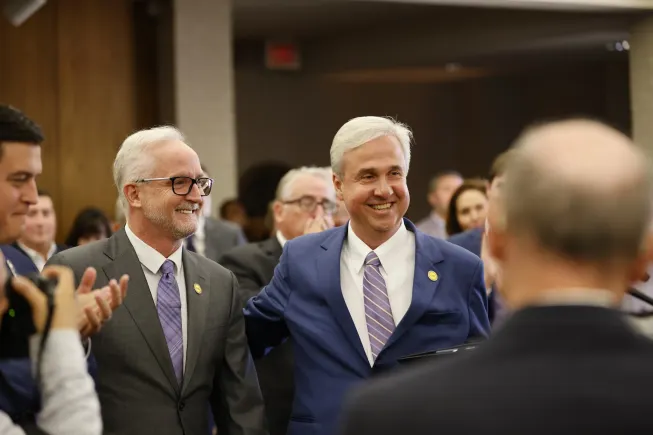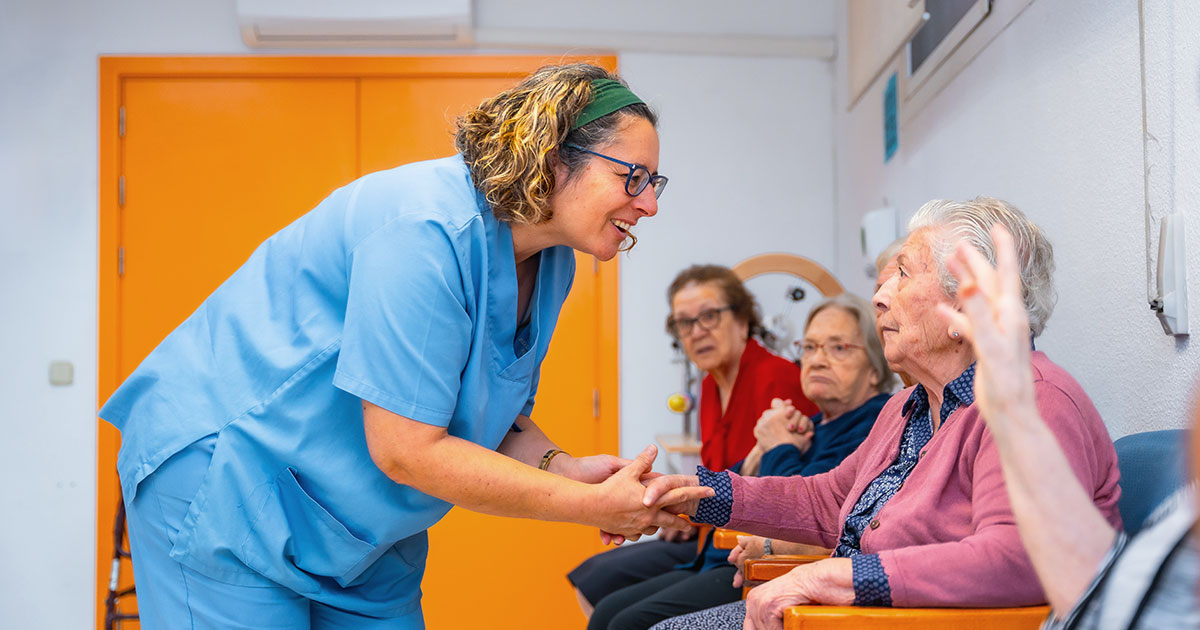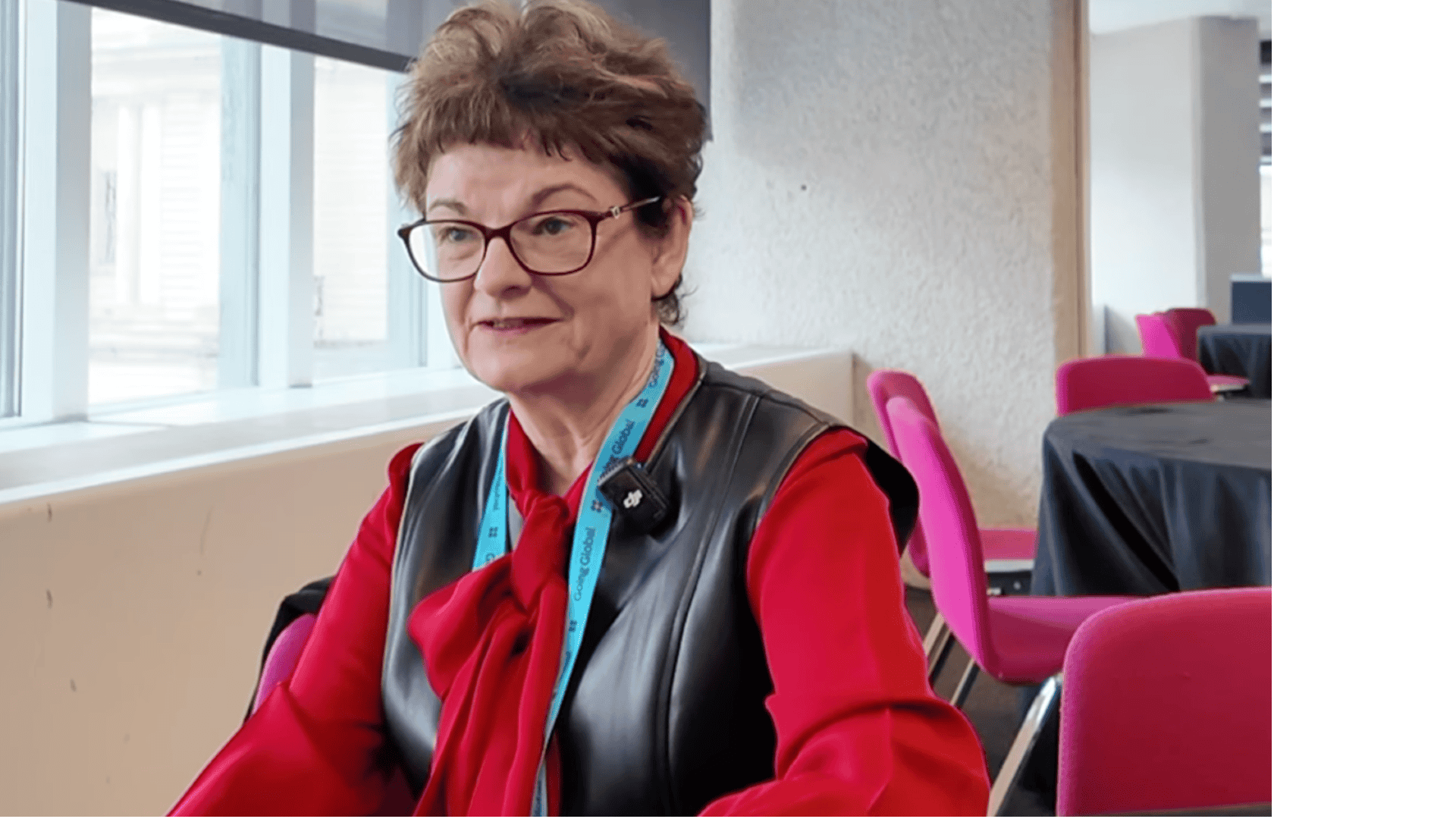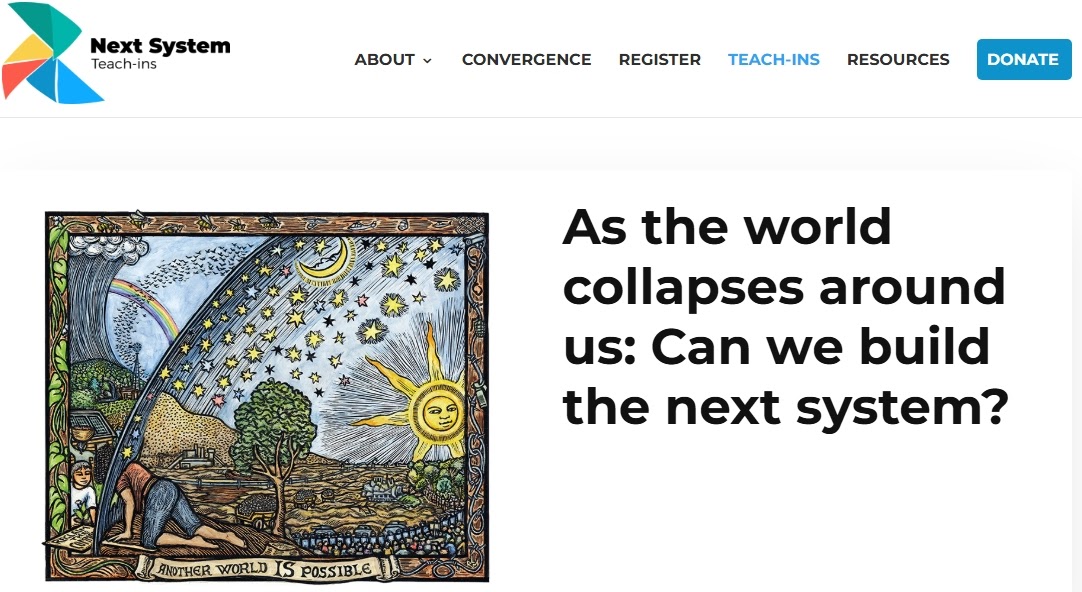The end of fall semester can be a relatively quiet period on campus, as many students return home and colleges gear up for the second half of the academic year. But at least six colleges are facing big transitions after announcing leadership changes in November.
One public California college will get a new president more than a year after its last permanent leader abruptly resigned amid backlash from system leaders. And a small liberal arts college in Pennsylvania — thrust into the national spotlight earlier this year amid Republican lawmakers’ antisemitism hearings — will soon be on the hunt to replace its president after she announced her forthcoming retirement.
Below, we’re rounding up a selection of last month’s most significant college leadership changes.
President: Wade Rousse
Institution: Louisiana State University System
Coming or going? Coming
Wade Rousse will take over as president of the eight-campus Louisiana State University System, its board said in a Nov. 4 release. Rousse previously led McNeese State University, a fellow public Louisiana college, and took the reins at the LSU System as the state’s governor increasingly seeks to be involved in its operations.
But Rousse will not have all of the same duties as his predecessor.
The board also announced that James Dalton, previously executive vice president and provost at the University of Alabama, will become chancellor of LSU’s main campus, in Baton Rouge. The board had previously considered Dalton as a finalist for system president.
Rousse and Dalton began their respective positions on Nov. 17, according to local news reports.
LSU’s last permanent leader, William Tate IV, served as both president of the system and chancellor of its main campus. The board had combined the two positions in 2012, but Tate’s abrupt departure in June came amid reports from the Louisiana Illuminator that the university was considering reseparating the roles.
The institution’s board did not confirm it had restructured the roles until it announced Rousse and Dalton’s appointments. According to the system, the split will allow the president “to focus on systemwide oversight and strategic initiatives” while the chancellor will work to make the flagship campus “a top 50 Research University” and eligible for the selective Association of American Universities.
President: David Cook
Institution: Iowa State University
Coming or going? Coming
The Iowa Board of Regents on Nov. 11 selected David Cook to lead Iowa State University, beginning March 2026. Cook, an alum of Iowa State, serves as president of North Dakota State University, a position he has held since 2022.
Under Cook, North Dakota State has restructured and made significant cuts, including by eliminating 80 employee positions and discontinuing or merging 29 academic programs. The university allocated the savings into 17 new programs, and the cuts reduced the public institution’s operating costs by $24 million, according to Cook’s curriculum vitae.
Per the Iowa board, Cook will receive $700,000 annually under a five-year contract.
Iowa State’s current president, Wendy Wintersteen, plans to retire in January after 46 years at the university.
President: Pat Pitney
Institution: The University of Alaska system
Coming or going? Going
University of Alaska President Pat Pitney plans to retire in May, she announced Nov. 13. She took over as interim leader of the public three-university system in June 2020, following the abrupt departure of beleaguered former President Jim Johnsen.
Johnsen, who oversaw the system at a time when Alaska’s governor sought to decimate its public funding, enacted heavy budget cuts and underwent two votes of no-confidence from faculty.
Pitney became the system’s permanent leader in 2022. Under her, the public system’s enrollment grew for three consecutive years, following years of declines.
During a September board meeting, Pitney and the system’s head of federal relations shared how the University of Alaska has navigated the Trump administration’s vacillating higher education policies.
The federal government froze roughly $42 million in federal grants and canceled another $6.6 million, including for grants geared toward Alaska Native and Indigenous students. But system officials said that’s a relatively low portion of the University of Alaska’s nearly $1 billion federal grant portfolio.
President: Michael Spagna
Institution: Sonoma State University
Coming or going? Coming
On Nov. 19, the California State University system announced that Michael Spagna will take over as Sonoma State University’s president beginning Jan. 20. Spagna has held positions at institutions within the Cal State system for over three decades and currently serves as the interim president of California State Polytechnic University, Humboldt.
The news comes over a year after Cal State’s leadership ousted Mike Lee, Sonoma State’s last permanent president. Lee stepped down in May 2024, less than a week after the system put him on leave for “insubordination” for brokering a deal with pro-Palestinian student protesters on his campus.
Spagna will have to lead the university through a difficult financial situation. Sonoma State enacted widespread staffing and programming cuts at the beginning of this year amid a multimillion dollar budget deficit.
President: Wendy Raymond
Institution: Haverford College
Coming or going? Going
Haverford College President Wendy Raymond said on Nov. 20 that she will retire in June 2027.
Haverford, a small liberal arts college in Pennsylvania, gained national attention in May when Republican lawmakers on the House’s education committee called Raymond to testify about how the university has responded to allegations of antisemitism on its campus. In August, the U.S. Department of Education opened an investigation into the college over claims it had mishandled reports of antisemitic harassment.
That month, Haverford was also named alongside 31 other colleges in a class-action lawsuit that alleged the institutions used early decision admissions to reduce competition and aid for students.
President: Kyle Wagner
Institution: Northeastern Technical College
Coming or going? Going
Northeastern Technical College’s governing board unanimously voted to fire President Kyle Wagner during a Nov. 25 meeting, after previously accepting a resignation letter that would have allowed Wagner to stay on through June, according to Queen City News.
The South Carolina community college has faced intense public scrutiny since a December 2024 report from the State Inspector General flagged financial and oversight issues stemming from its dual enrollment program.
The program — which one state official described as predatory — automatically enrolled some high school students into courses, often without their knowledge. The audit also found that the program negatively affected students’ academic standing and their ability to access financial aid in the future.
Due to unreliable enrollment numbers, the college reported a nearly 18-fold increase in dual enrollment participation — a stat cited in one of Wagner’s performance evaluations, the report said. Since 2016, Wagner’s annual salary grew 43.9% to just over $201,000.
When the report first came out, Northeastern Technical’s board chair said that Wagner had the board’s steadfast support amid calls for his resignation, according to The Post and Courier.
Northeastern Technical’s accreditor also issued a warning to the college around that time, saying the institution wasn’t in compliance with five of its standards, including having an adequate number of full-time faculty. Its next review is scheduled to take place this month.
The board last week did not publicly disclose the timeline for hiring Wagner’s replacement and has declined to share his resignation letter or details around his termination, Queen City News reported.










